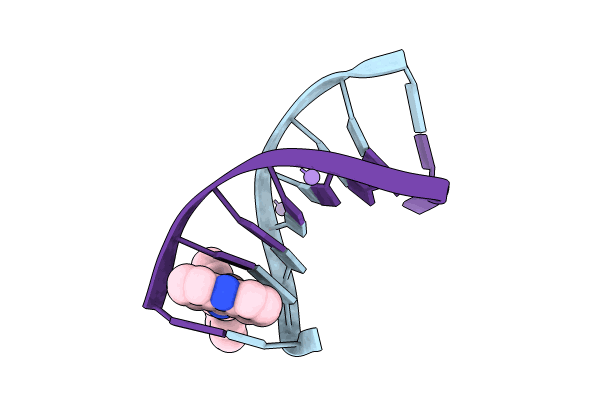
Deposition Date
2023-10-11
Release Date
2024-08-07
Last Version Date
2024-09-11
Entry Detail
PDB ID:
8WQ7
Keywords:
Title:
Crystal structure of d(CGTATACG)2 with a four-carbon linker containing diacridine compound
Biological Source:
Source Organism:
synthetic construct (Taxon ID: 32630)
Method Details:
Experimental Method:
Resolution:
1.58 Å
R-Value Free:
0.24
R-Value Work:
0.21
R-Value Observed:
0.22
Space Group:
C 2 2 21


